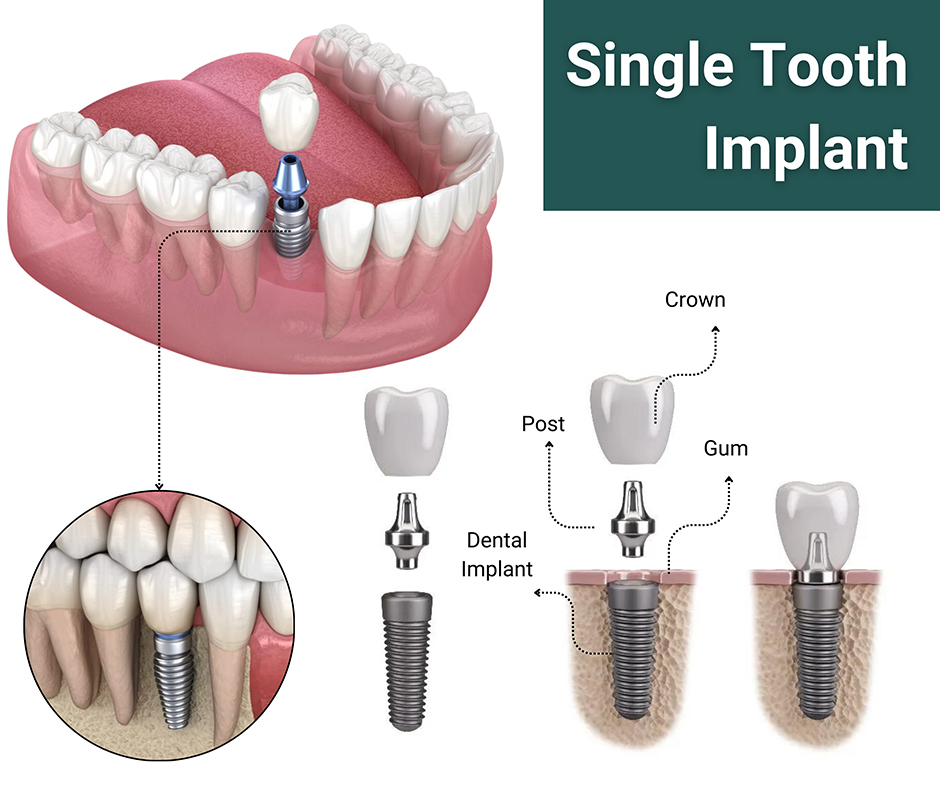The 8-Minute Rule for Dental Sense
Table of ContentsAll about Dental SenseSome Known Details About Dental Sense The Single Strategy To Use For Dental Sense6 Easy Facts About Dental Sense Described
are medical tools surgically dental implanted right into the jaw to restore an individual's ability to eat or their look. They provide support for man-made (phony) teeth, such as crowns, bridges, or dentures. When a tooth is lost due to injury or condition, an individual can experience difficulties such as rapid bone loss, faulty speech, or adjustments to chewing patterns that result in discomfort.Oral implant systems are composed of a dental implant body and dental implant joint and might also include an abutment addiction screw. Dental implants. The dental implant body is surgically put in the jawbone instead of the tooth's origin. The dental implant joint is generally connected to the dental implant body by the joint addiction screw and prolongs via gum tissues right into the mouth to support the connected synthetic teeth
(https://www.openstreetmap.org/user/dentalsense1)Framework of The Dental Implant System selecting oral implants, speak with your dental service provider concerning the possible benefits and dangers, and whether you are a prospect for the treatment. Points to think about: Your total wellness is a crucial factor in figuring out whether you are a great prospect for oral implants, the length of time it will require to recover, and for how long the dental implant might remain in location.
Smoking cigarettes might impact the healing process and decrease the long-lasting success of the implant. The recovery procedure for the dental implant body might take a number of months or longer, during which time you normally have a momentary abutment in place of the tooth. the oral implant treatment: Thoroughly follow the oral health guidelines provided to you by your oral provider.
All About Dental Sense
Implant failing can result in the need for an additional procedure to deal with or change the implant system. Brings back the ability to chew Brings back aesthetic look Aids keep the jawbone from reducing due to bone loss Maintains the health and wellness of the surrounding bone and gum tissues Aids maintain nearby (close-by) teeth secure Boosts lifestyle Damages to surrounding all-natural teeth throughout dental implant placement Injury to the surrounding tissues during surgical treatment, such as sinus perforation Injury throughout surgical procedure (for instance, fracture of surrounding jawbone) Insufficient feature, such as really feeling like the teeth do not bite with each other usually An experience that the tooth hangs or twisting in place resulting from a joint screw loosening Implant body failing (looseness of the implant body) because of systemic infection, which may be most likely in people with uncontrolled diabetes because of regional infection in bone and gum tissues supporting the dental implant body as a result of delayed healing, which might be more probable in individuals that smoke Difficulty cleaning up the gums around the dental implant, leading to bad oral hygiene Neglected gum condition Post-surgical feeling numb as a result of nerve impingement or damage Always alert healthcare carriers and imaging specialists that you have oral implants prior to any type of magnetic vibration imaging (MRI) or x-ray treatments.
FDA is not knowledgeable about any kind of negative events reported for MRI or x-ray procedures with oral implants. Dental implants systems are commonly made my sources of products that adhere to global consensus criteria of the International Company for Standardization (ISO) or ASTM International. These standards have information of what makes a risk-free material.

A dental implant is a framework that changes a missing tooth. With screw-like tools, the specialist inserts an implant right into the jawbone, and it functions as an anchor for a fabricated tooth, called a crown. A tool called an abutment links the synthetic tooth to the oral implant. The crown is custom-made to fit the person's mouth and match the shade of their teeth.
The Only Guide for Dental Sense
Some individuals are not qualified for oral implant surgery. It is for oral doctors to operate people with: severe illnessuncontrollable metabolic diseasebone or soft cells condition or infectionIf these problems are resolved, an individual can have the surgery. In, dental specialists abstain from operating people with: If people with any one of the above undergo dental implant surgery, there is a higher danger of the dental implant failing.

Dental implant surgical treatment is a customized process. Give you time to recover. Affix the message and final crown, bridge or denture.
Next, your surgeon will thoroughly put the oral implant right into your jaw. Your surgeon will reposition your gums and close the cut with stitches. If your dental implant is near the front of your mouth, your dental professional will certainly make a short-lived tooth for you to wear up until you recover. This way, you will not have a void in your smile while you recuperate.
Examine This Report about Dental Sense
Throughout the recovery stage, your jawbone must fuse to the dental implant. This procedure can take anywhere from 3 to 9 months.
Once your dental implant heals, your dental practitioner can connect the joint (tiny adapter article) and your last restoration (crown, bridge or denture). This normally takes concerning one hour to complete and may call for a 2nd minor surgery. You should not feel any pain during your oral implant treatment since your provider will make use of medication to numb your periodontals.